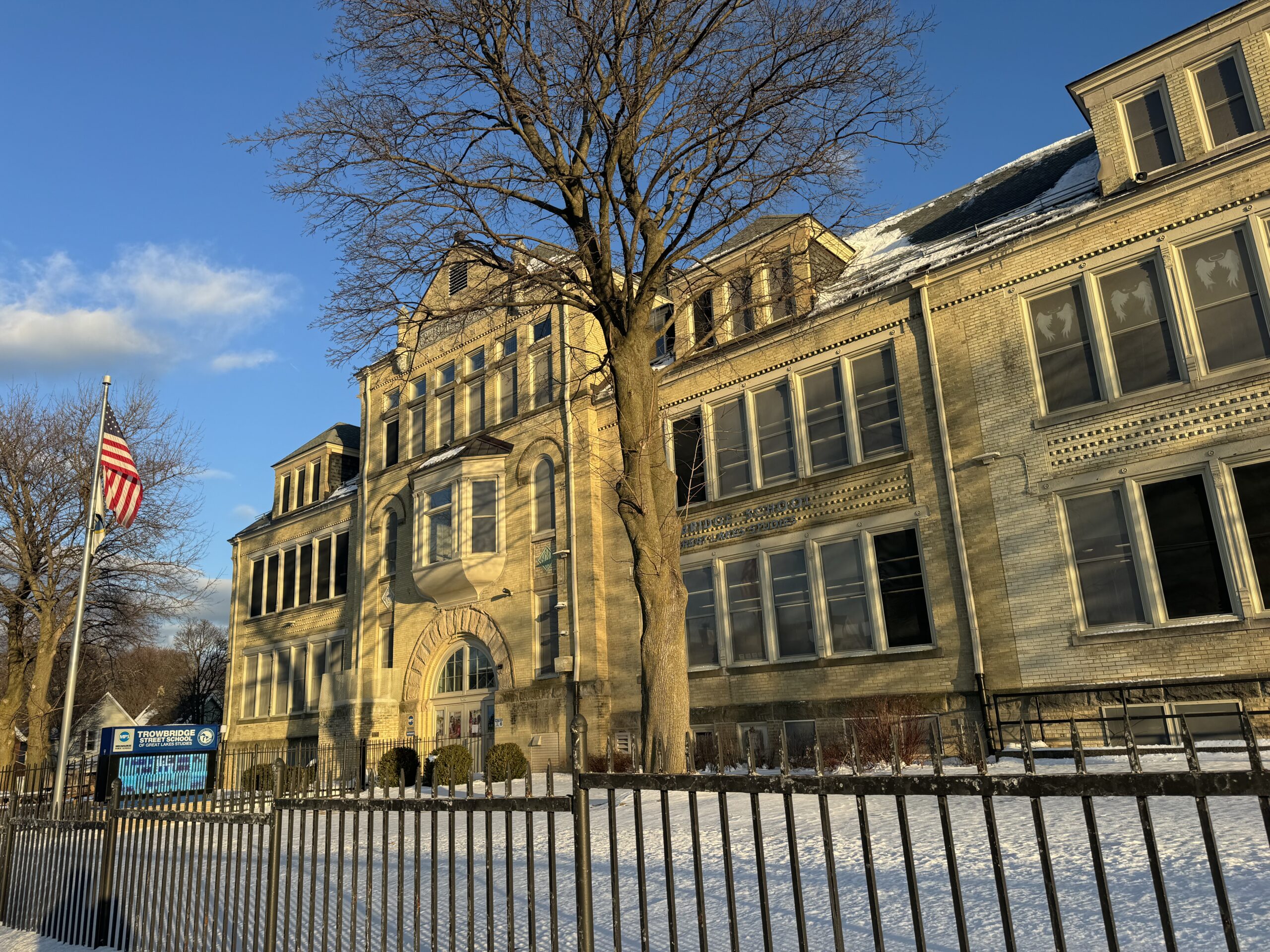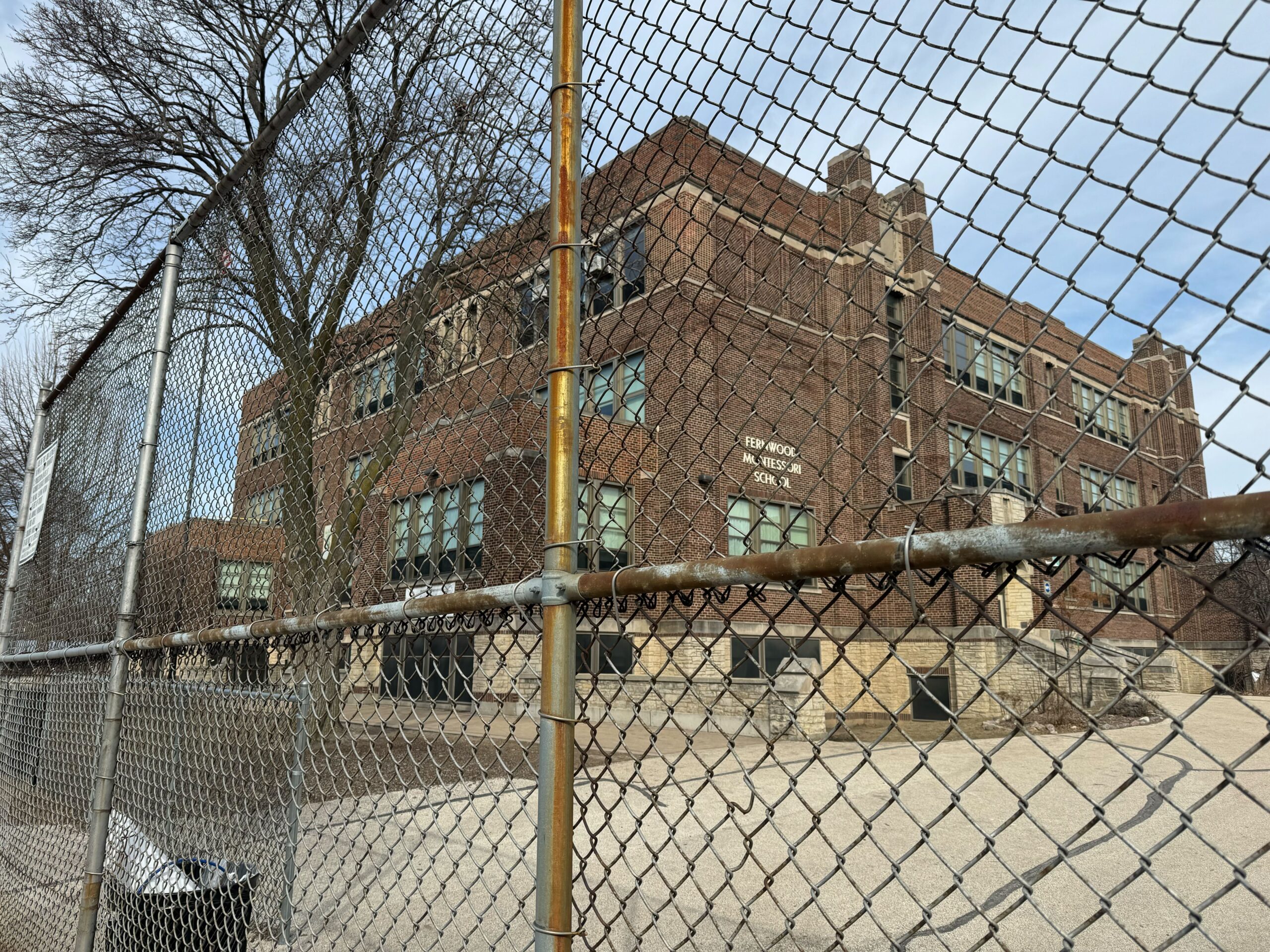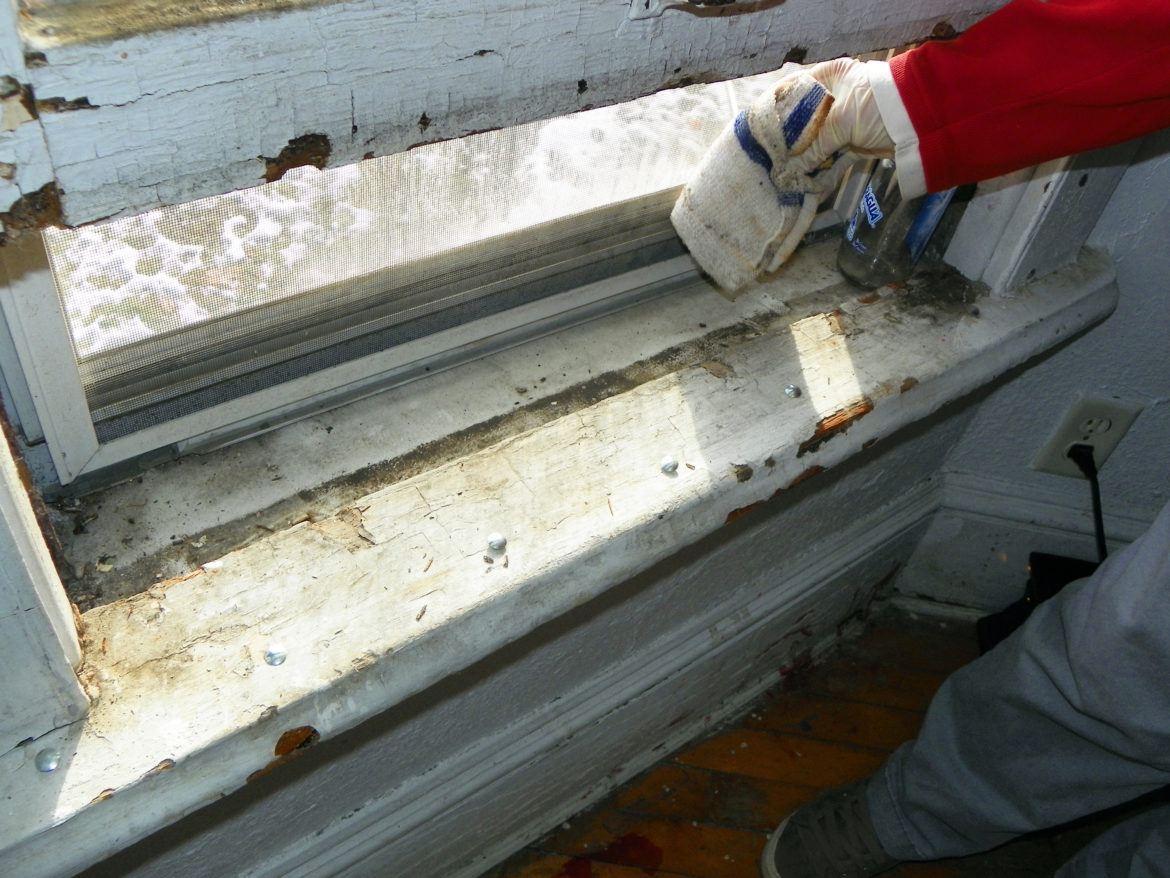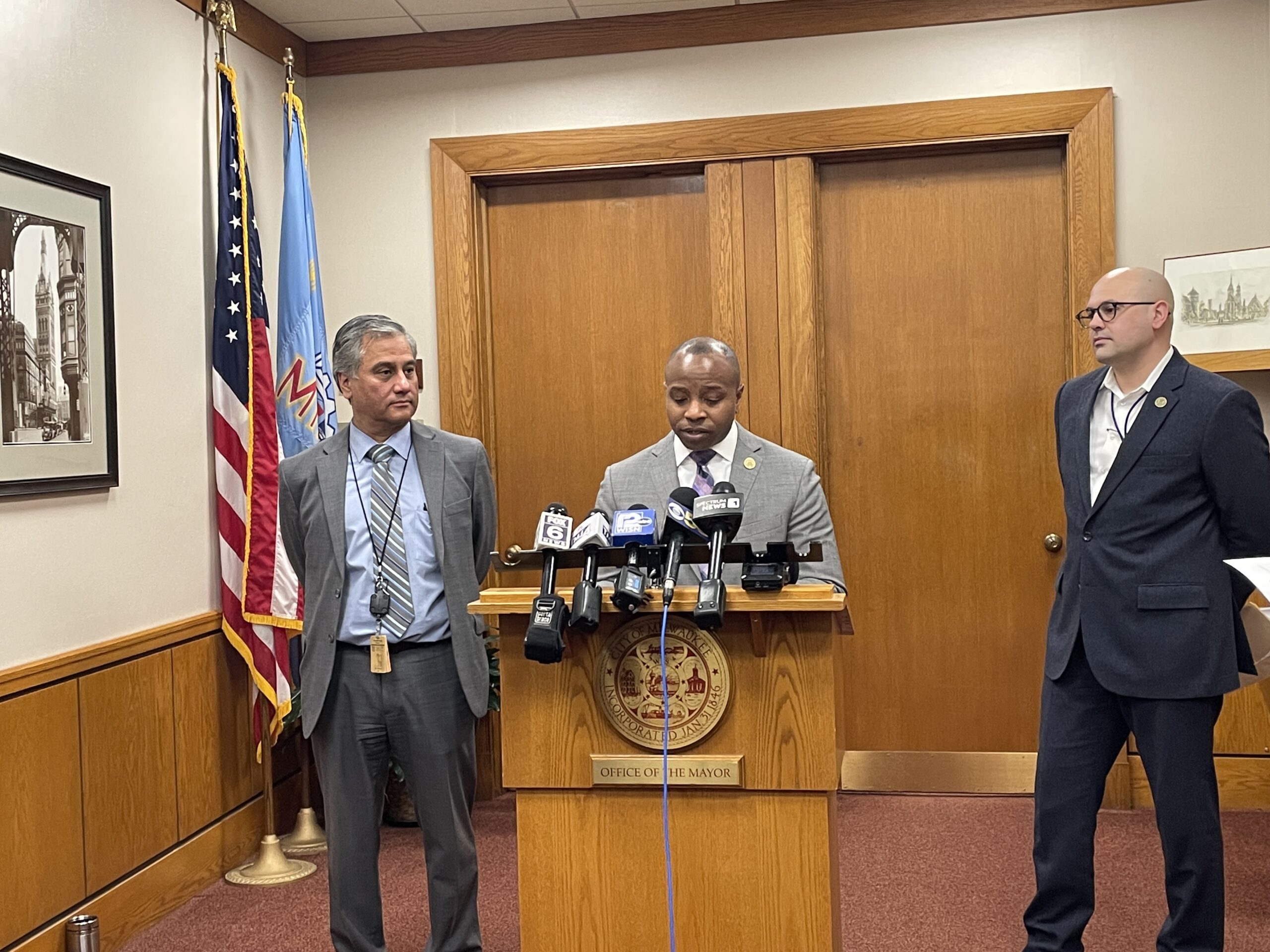For the past few weeks, Kristen Payne has been forced to make the difficult decision to send her third grader to school.
Her child attends Golda Meir Lower Campus in Milwaukee. A recent lead risk assessment from the Milwaukee Health Department determined all floors and windowsills at that school were considered to be a “dust lead hazard.”
A follow-up lead hazard assessment at the school last week found two surface wipe samples “did not pass lead safety standards.”
Stay informed on the latest news
Sign up for WPR’s email newsletter.
Payne said she and other parents now have concerns about how widespread the issue is at other schools across the district. Payne and others have started a website and petition in response to the elevated lead levels, asking for more transparency from the district.
“I really expect more widespread testing of the schools to know the full scope of this problem,” Payne said. “That needs to happen.”
City officials gathered earlier in the month to announce dangerous levels of lead dust had been found at Golda Meir Lower Campus and Kagel Elementary School in Milwaukee. One student at each of those schools tested positive for lead poisoning.
Health officials said on Feb. 11 that two additional students have tested positive for lead poisoning. Those children attend Maryland Avenue Montessori School and Trowbridge Street School of Great Lakes Studies. Lead risk assessments are now underway at those schools.
Tyler Weber, the Milwaukee Health Department deputy commissioner for environmental health, said the cases are the first time schools within the Milwaukee Public Schools system were identified as the cause of lead poisoning in children.
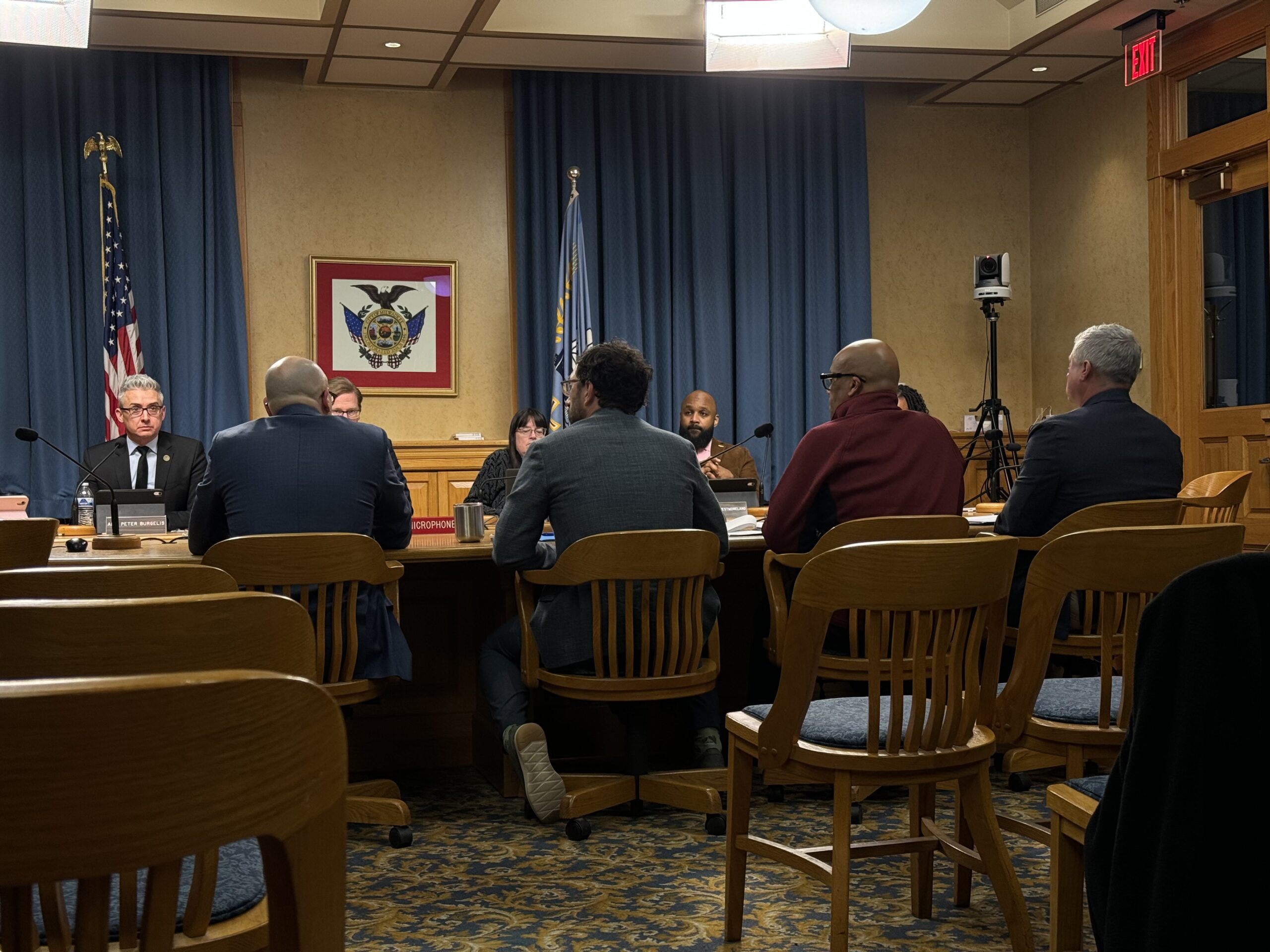
Officials with the health department told city leaders Friday they may move to shut down classrooms or schools in Milwaukee in the near future to clean additional buildings that may have lead risk hazards. That comes as the department is planning to ramp up testing for more school children across the district.
“Shutting down and closing classrooms and/or schools is becoming our recommendation,” Weber said during the Milwaukee public safety and health committee meeting Friday.
Mike Totoraitis, the city’s health commissioner, called the situation a public health emergency. But the health department did not offer a timeline on when a decision would be made.
Meanwhile, MPS leaders blamed the issue on staffing and budgetary constraints. Michael Harris, MPS interim chief school administration officer, said the district currently only employs two lead inspectors and five painters to work on lead paint abatement.
Weber has said there is “deteriorated paint” and “paint chips on the walls” at Golda Meir Lower Campus and Kagel Elementary School.
“You don’t have this level of paint chipping if you’re staying on top of maintenance,” Weber said Friday.
Gov. Tony Evers’ proposed budget, which was released last Tuesday, also mentions the issue. He is proposing funding for lead hazard investigations.
“Failure to act swiftly and effectively will place children at serious risk of lead poisoning, developmental delays, and other possible health complications,” the budget brief said.
When asked about the situation last week, he said the issue at MPS is “unbelievably bad.”
“I mean … this should have been taken care of years ago,” Evers said.
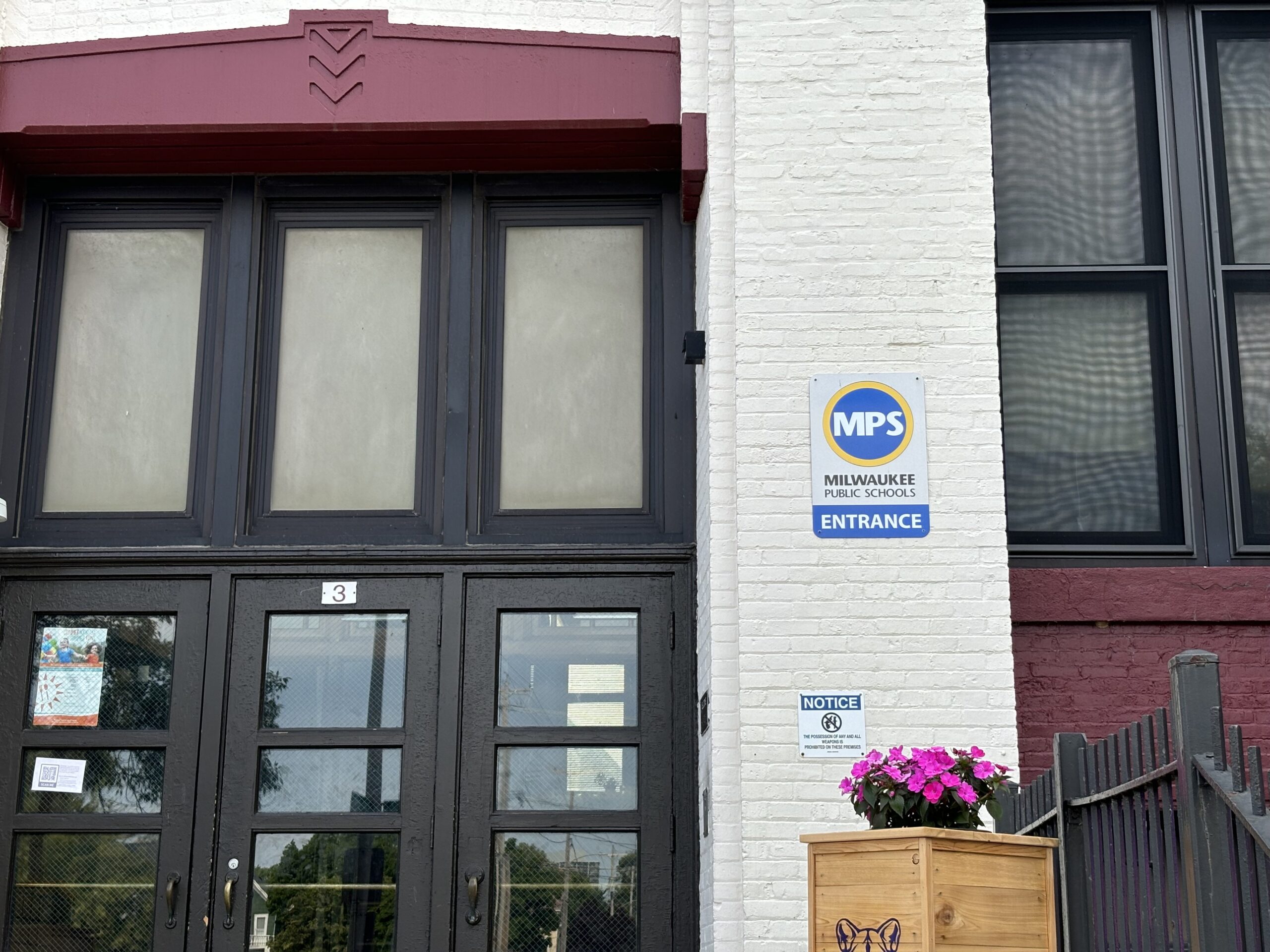
Around 85 MPS schools built before 1978
There are around 85 schools in the MPS system that were built before 1978 when lead-based paint was banned. Harris, the interim chief school administration officer, said those include 26 high schools and five middle schools. The other 54 schools are kindergarten through eighth grade or kindergarten through third grade, according to Harris.
Nearly 70,000 students are enrolled at MPS, while around 8,500 staff are employed by the district.
Children younger than age 6 are “especially vulnerable to lead poisoning,” according to Mayo Clinic. Lead poisoning can affect children’s mental and physical development.
Harris said district staff walk through schools with building engineers to identify any maintenance issues every year. They then make a checklist and put out work orders for repairs.
Several photos in the lead risk assessment reports for Golda Meir Lower Campus and Kagel Elementary School show peeling and chipping paint throughout the building. Milwaukee Alder Peter Burgelis asked Harris if those rooms and areas were “forgotten, skipped, overlooked,” by district staff.
“I don’t have that information right in front of me,” Harris said during the meeting. “So I would have to follow up with that.”
Harris said the district used to have 15 to 20 painters. They now have five.
After the meeting, Harris spoke to reporters.
“We are doing everything that we need to do right now to address this issue, to ensure the safety and wellbeing of staff and students,” Harris said.
“I would say that work has been done,” he added. “The amount of work, or — has it all been done? No. But work has been done in our schools to remediate this issue.”
The district has said they’ve “certified lead paint renovator painters” who are working within Golda Meir Lower Campus and Kagel Elementary School.

Lead risk reports stressing Milwaukee Health Department
Weber said staff with the Milwaukee Health Department are working overtime to complete the lead risk assessments for the schools. It takes six to eight lead risk assessors around six hours to complete the job. Each lead risk assessment costs around $10,000, according to the health department.
“There’s not enough weeks in the year for our lab to handle the schools that we would need to look at, and that is even putting aside our standard caseload of 100, 200 cases that we have to work with per year,” Weber said.
Evers’ 2025-27 executive budget is proposing more than $6 million to support “lead poisoning intervention and response,” according to a statement from the governor’s office. That money would go to local health departments.
Totoraitis said he hopes that proposal makes it into the final budget.
“We’re eager to support that, to increase dollars available to do the work,” he said.

Evers’ budget also includes calling for $100 million in one-time funding to restart the “Windows Plus Program, which would support lead-safe renovation in schools, homes, and child care centers,” the governor’s budget brief states.
A spokesperson for the governor said that program would help fund renovation projects that are ineligible for funding under the Lead Safe Homes Program.
The U.S. Centers for Disease Control and Prevention said windowsills and window wells “can also contain high levels of leaded dust, so they should also be kept free of dust.”
Tom Neltner, the national director of Unleaded Kids, said lead dust on windowsills will often get on floors where children play. Renovations of older buildings also don’t always take care of the issue, he said.
“They want to keep the historic character of the building so they don’t replace the biggest sources of lead, which is typically windows,” Neltner said.
Lead dust is often formed as lead paint chips and wears down, according to the U.S. Centers for Disease Control and Prevention. Weber said lead dust can be especially hazardous for children because they can spread it easily when they get it on their hands.
MPS has deadline to provide plan for pre-1978 schools
Totoraitis said MPS has until March 21 to provide the Milwaukee Health Department a plan for how they plan to address and clean other schools built before 1978.
“As we continue to look at more schools, we are concerned that the hazards at the remaining MPS schools that were built before 1978 need to be addressed,” Totoraitis said.
The Milwaukee Health Department will soon complete its lead risk assessments at Maryland Avenue Montessori School and Trowbridge Street School of Great Lakes Studies. A spokesperson for the department said it will make those reports public when they’re finished.
Wisconsin Public Radio, © Copyright 2025, Board of Regents of the University of Wisconsin System and Wisconsin Educational Communications Board.
